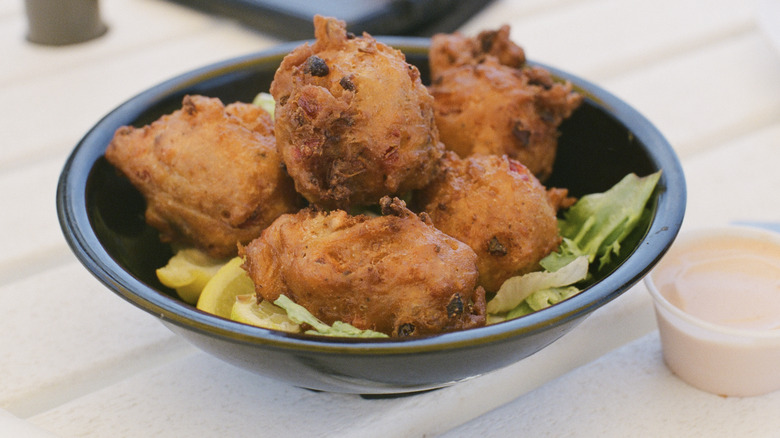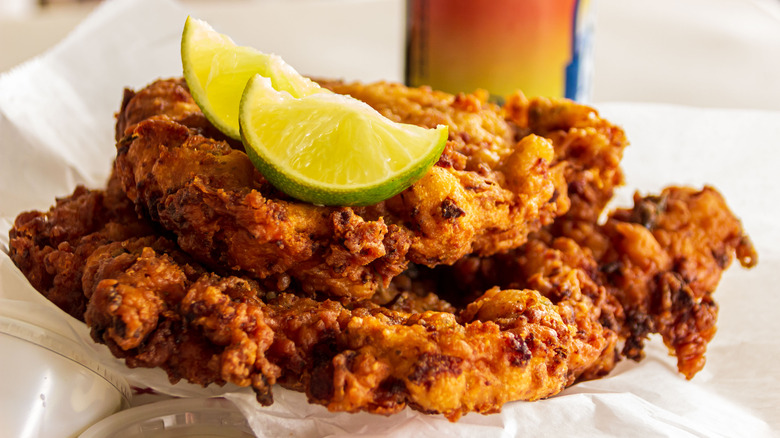When Choosing Fresh Conch, It's All About The Color
Conch is one of those types of seafood that isn't so common in the United States. However, if you've ever visited the Caribbean, you've likely seen this tasty dish in a few forms. Cracked conch, conch fritters, conch chowder, and conch ceviche are just a few ways it's often prepared, and if you're looking to make any of these dishes at home, you'll need high-quality conch; that's why you should look to this marine snail's color to tell its freshness. Conch should be mostly white, but with hues of pink and orange.
Seafood has a short shelf life, so you want to make sure you're finding the best quality conch and cooking or preparing it shortly after purchase. Aside from purchasing it freshly caught, you want to tenderize the meat to make sure it's in its best form before serving. Otherwise, it has a tendency to taste rubbery. Though mollusks can be off-putting to some, conch is tender and lacks a fishy smell, so it's actually a great way to introduce yourself to seafood if you're not used to it.
Fresh conch is mostly white
If you're preparing conch yourself, you should know what to look for before purchasing it from your local seafood market — keep in mind, though, that conch is relatively hard to find in certain parts of the United States. If your grocery store doesn't have it, you can likely have it shipped in from a market in Florida or the Caribbean.
Conch should always be white; this signals that it's at its freshest and is generally safe to eat. It might have a bit of pink or orange to it, which is perfectly natural, but make sure to avoid any conch that's gray in color; this is a sign it's too old and either won't taste right or is unsafe to consume.
Smell matters, too. Conch hardly has any scent to it, so if it has a strong fishy odor, it's a sure sign that the seafood is too old to eat. If you check the conch and have any doubts about its freshness, don't eat it.
Is it safe to eat conch without cooking it?
There are several popular ways to prepare conch: fried, grilled, steamed, or even prepared in a ceviche. Of course, in the former few cooking methods, the conch is cooked, so there is very little risk of food poisoning (unless you use bad conch). However, when prepared in a ceviche, the conch is eaten raw, which in most cases is generally safe as long as the conch is fresh and of good quality. Although the acid in ceviche does remove some microbes, it does not fully kill harmful bacteria or parasites that could be growing on bad conch as does high heat, so make sure you're comfortable with the conch and familiar with its freshness before preparing it ceviche-style.
While conch ceviche is popular in Florida and the Caribbean, it doesn't mean it's always safe. In 2021, Bahamas officials warned consumers to avoid raw conch after 10 people showed signs of food poisoning following eating conch that was handled improperly. Make sure you're confident in the snail's quality before consuming it.


